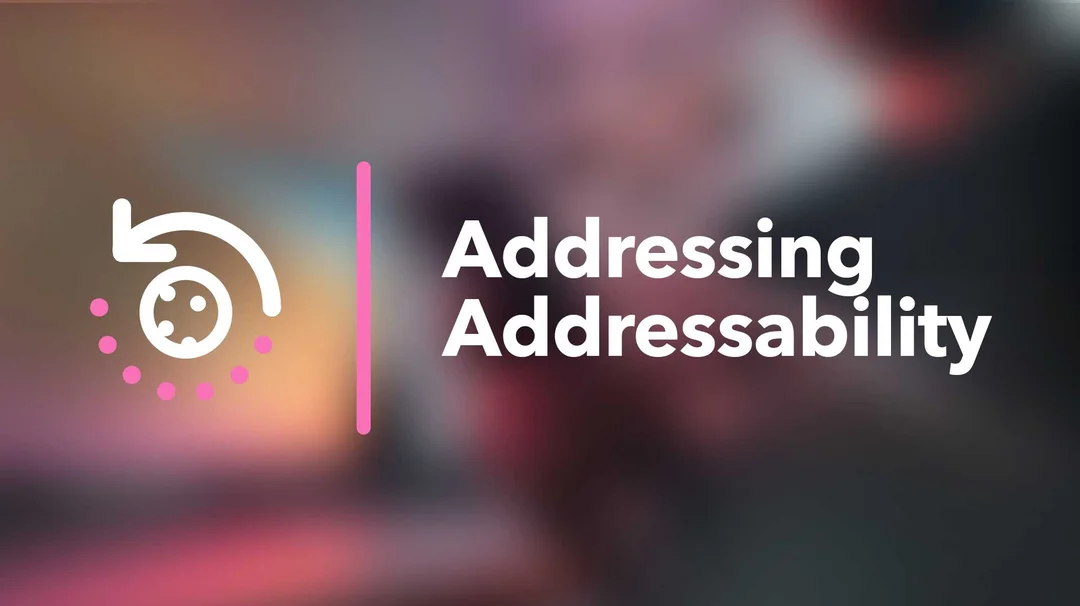What's the Addressability Spectrum, and how does it impact the cross-domain identifier performance of websites?
Why it matters — Addressability is in for a significant change with the deprecation of third-party cookies. As a result, advertisers must understand their current addressability options and build their advertising plans to account for a portfolio of solutions.
Digital advertising is changing rapidly. This is in response to increasing demands for consumer privacy from governments, privacy advocates, companies, and consumers worldwide. These changes impact the digital advertising ecosystem and force companies to reconsider how they understand advertising and the internet.
For over a decade, digital advertising has focused on reaching individual consumers with tailored ads. Based on insights or inferences about their online behavior. However, this is being challenged due to the global shift towards greater privacy and data security.
When Apple updated iOS devices to iOS14.5, the ad industry saw how addressability would change when third-party cookies are deprecated. According to mobile app analytics company Flurry, the global opt-in rate for IDFA on iOS is 25%. However, the US opt-in rate is only 18%. So, advertisers will track only 18% of all US-based iOS users on their iPhones or iPads, and only on individual apps that earn permission.
This shift forces the industry to redefine how digital advertising is understood and delivered.
What’s Addressability?
“Addressability” is a term often used in digital advertising. It describes how much of an audience is identifiable for ad targeting and online measurement.
Third-party cookies and device identifiers, like IDFA, enable high addressability across websites and mobile apps. As a result, companies in the digital advertising value chain can recognize individual consumer devices as people use them for browsing the internet or using mobile apps.
Specifically, almost all programmatic ad targeting today is based on the ability to track consumer devices across websites and apps. When third-party cookies deprecate in all significant browsers, information about online consumer behavior will be available on a website-by-website basis. Still, it won’t be readily available across websites.
This change represents a tremendous shift in how advertisers need to think about targeting ads to consumers and measuring the success of their ad campaigns.
Introducing a New Response to Privacy Changes
The industry needs a more nuanced definition of addressability in response to every major browser moving to deprecate third-party cookies and mobile app platforms, like Apple iOS, making mobile advertising identifiers opt-in only.
The Addressability Spectrum (shown below) provides a visual framework for handling addressability once the web browsers and app platforms impending changes take effect.

Collectively, the categories displayed in this diagram represent the future state of addressability. Each ad impression will fall into one of these addressability categories. Working from left to right in the diagram, the definitions below explain what addressability will mean.
- Unknown:
This segment of consumers is already working to hide their online behavior. They may be using multiple VPNs, the Tor browser, or taking other actions to prevent their online behavior from being tracked. This segment is tiny, and advertisers don’t generally target these consumers, but they’re included here for completeness.
- Cohorts:
Cohorts are effectively groups of consumers with similar behaviors. They’re often referred to as “audience segments.” Privacy Sandbox proposals like FLoC and FLEDGE propose that cohorts be used to target consumers instead of targeting individuals.
- First-Party Identified:
This is a segment of individual consumers identified on a website-by-website or app-by-app basis. Using first-party cookies or local browser storage can achieve this with pseudonymous identifiers. It may also be achieved when a consumer chooses to create an account on a website and provides an email address or other unique information.
- Cross-Domain Identified
This is a segment of individual consumers identified across different websites or apps. Once third-party cookies are deprecated in all major browsers, this may only be achieved with identity solutions like Liveramp RampID or ID5. Consumers who opt-in to IDFA on iOS apps fall into this category.
Examining the Internet Through the Lens of the Addressability Spectrum
These impacts will apply to all channels, including web and mobile apps. Thinking about how the Addressability Spectrum will apply to websites provides a lens into the challenges advertisers will face once third-party cookies are deprecated, and mobile device identifiers are opt-in only. A similar analysis can be done for mobile apps as well.
Below, four stereotypical websites illustrate how the new definition of addressability along a spectrum creates challenges for advertisers compared to current advertising methods.
Note: Outlier websites don’t fit this model but are few and far between. Most websites will fall neatly into these descriptions.

- long-tail-site.com is representative of the vast majority of websites on the internet. These websites typically have low monthly traffic but monetize with programmatic advertising. Generally, these websites will be able to identify less than 2% of their consumers with cross-domain identifiers.
- Popular-publisher.com is representative of high-quality, high-traffic websites or high-quality niche websites that have consistent viewership. However, these websites can identify less than 2% of their consumers with cross-domain identifiers. In addition, many of these websites have tried to increase the number of cross-domain identifiable visitors. Still, they’ve been unable to compel their visitors to create accounts or sign up for emails at high rates.
- Login-publisher.com is representative of high-quality, high-traffic websites with consistent viewership. These websites can identify 10-15% of their visitors because they’ve found ways to incentivize visitors to create accounts or sign up for subscriptions. Further, these websites are some of the largest and most popular online websites.
- Popular-brand.com is representative of internet brands driving purchases or consumer signups for goods and services. The most popular brand websites may be able to identify as much as 20% of their visitors because they have products that people love and return for more.
Redefining Addressability in Digital Advertising
When viewed through the lens of the Addressability Spectrum, it becomes clear that addressability will change significantly when third-party cookies are deprecated in all major browsers, and mobile device identifiers become opt-in only on iOS and Android.
While some websites and apps will be standout performers that can earn cross-domain identifiers from more than 10% of their visitors, the vast majority of websites and apps won’t.
As more privacy regulations are passed, technical blocks to workarounds like first-party click redirects and device fingerprinting are put in place, consumer transparency, control, and consent are increasingly required for the capture and use of consumer information to power digital advertising, and those cross-domain identifiers will be less and less valuable because consumers are expected to restrict the capture and use of their data to the websites and businesses they trust.
The digital advertising ecosystem must think about addressability differently to address this future state. The opportunity for advertisers lies in solving for cohorts of consumers as proposed in Google’s FLoC or FLEDGE and leveraging supply partners to use first-party audience information.
TripleLift’s Building for the Future
TripleLift is focused on a portfolio strategy to solve for the future of addressability. Our products will use the best available data from across the addressability spectrum on every ad impression to ensure that a campaign will reach the intended audience.
How campaigns are planned and success is measured will need to change to reflect the available data and capabilities. Still, TripleLift has the experts and experience to help guide your advertising to successful outcomes.





